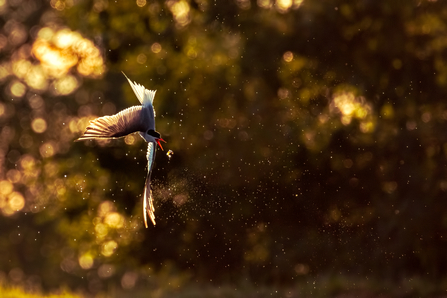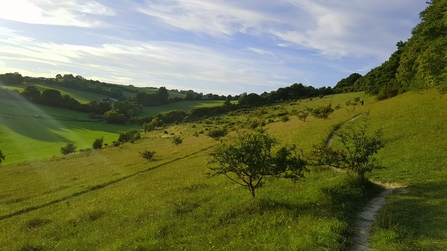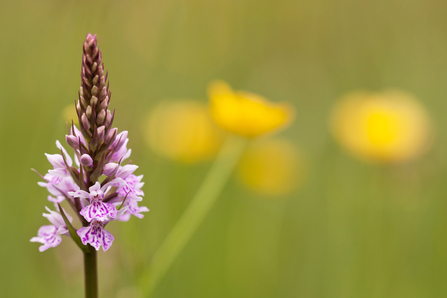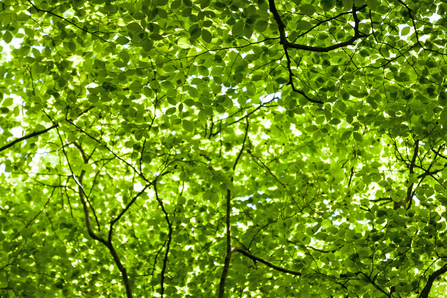
Common tern by Phill Luckhurst
Yoesden nature reserve by Jacqui Titcombe

Common tern by Phill Luckhurst
In June, Loddon Nature Reserve near Twyford is teeming with life. Great crested grebes, common terns, and coots are active and visible in the shallows and reed-fringes. Birds such as blackcaps and whitethroats are commonly heard singing from scrubby margins. Additionally, active bats at dusk can be seen skimming over the water. This makes it an excellent place for birdwatching and observing nocturnal wildlife.
Flat; partly flooded in winter with muddy, short slopes; gate, boardwalk
Kate Titford
Hurley Chalk Pit is a summer jewel in June. Wildflowers like pyramidal and bee orchids bloom among wild marjoram and quaking grass. These species are typically in full bloom during this month, making it a prime time for wildflower enthusiasts. Excavated more than 150 years ago, its chalk cliffs and screen contain flints. The warm and sheltered pit attracts 15 species of butterfly, including common blues and gatekeepers.
Gentle slopes but watch out for some loose flint and roots

Common blue (male) © Tom Hibbert
Whitecross Green Wood is an ancient woodland that bursts with life in June. Wide swathes of grass are rich in wild flowers. One of the rarer species you can see here is the grass vetchling, a member of the pea family, which flowers from May to July. At this time of year summer butterflies are abundant. Look out for the marbled white and common blue. The woodland's rides and glades also attract other pollinators and nesting birds, making it an abundant location for a rejuvenating summer stroll.

Justin Warhurst
Yoesden's dramatic slopes of chalk grassland support a riot of wildflowers in June. The site is home to an impressive variety of butterflies. It is considered by many as one of the jewels of the Chilterns Area of Outstanding Natural Beauty for the numbers of butterflies found on site. 28 species have been recorded, including three scarce blue species: Adonis, chalkhill and small blue butterflies, all of which rely on the flower-rich grassland that makes up about half of the reserve. The hillside paths offer spectacular views and a rewarding workout, attracting both nature enthusiasts and fitness seekers.
Sloping, steep and stony in places, muddy in places; kissing gates and gates; bench

Common spotted orchid by Chris Deeney
The site's fascinating geology provides an engaging experience for curious visitors of all ages. Geological wonders, rare fen and rich insect life make Dry Sandford Pit a nature reserve of national importance. Its extraordinary array of habitats, from fossil-rich cliffs to chalk grassland and woodlands, are all bursting with plants and animals. The cliffs contain many corals and visible fossils of marine creatures dating back to the Jurassic era when Oxfordshire was under the sea.
In June, common spotted-orchids flower in the fen area, and dotted amongst these are the purple spikes of the clove-scented marsh fragrant-orchid.
A section of path has been re-routed to avoid trees infected by ash dieback disease. Keep safe by following the alternative, way-marked routes. Undulating, steep cliffs; firm paths, some moderate slopes; kissing gates

Beech canopy by Chris Deeney
Foxholes is a tranquil woodland near Bruern that comes alive with birdsong and butterflies in early summer. Look out for treecreepers and nuthatches, crawling along the woodland’s trunks. Towering beech trees cast dappled light, while the understorey is rich with ferns and insects. This makes it an ideal location for a peaceful walk through shady glades, especially during the early summer months.
Gently sloping; mainly grassy, soft when wet, some roots, gaps (0.5m wide), kissing gate. Off-road pushchair recommended.